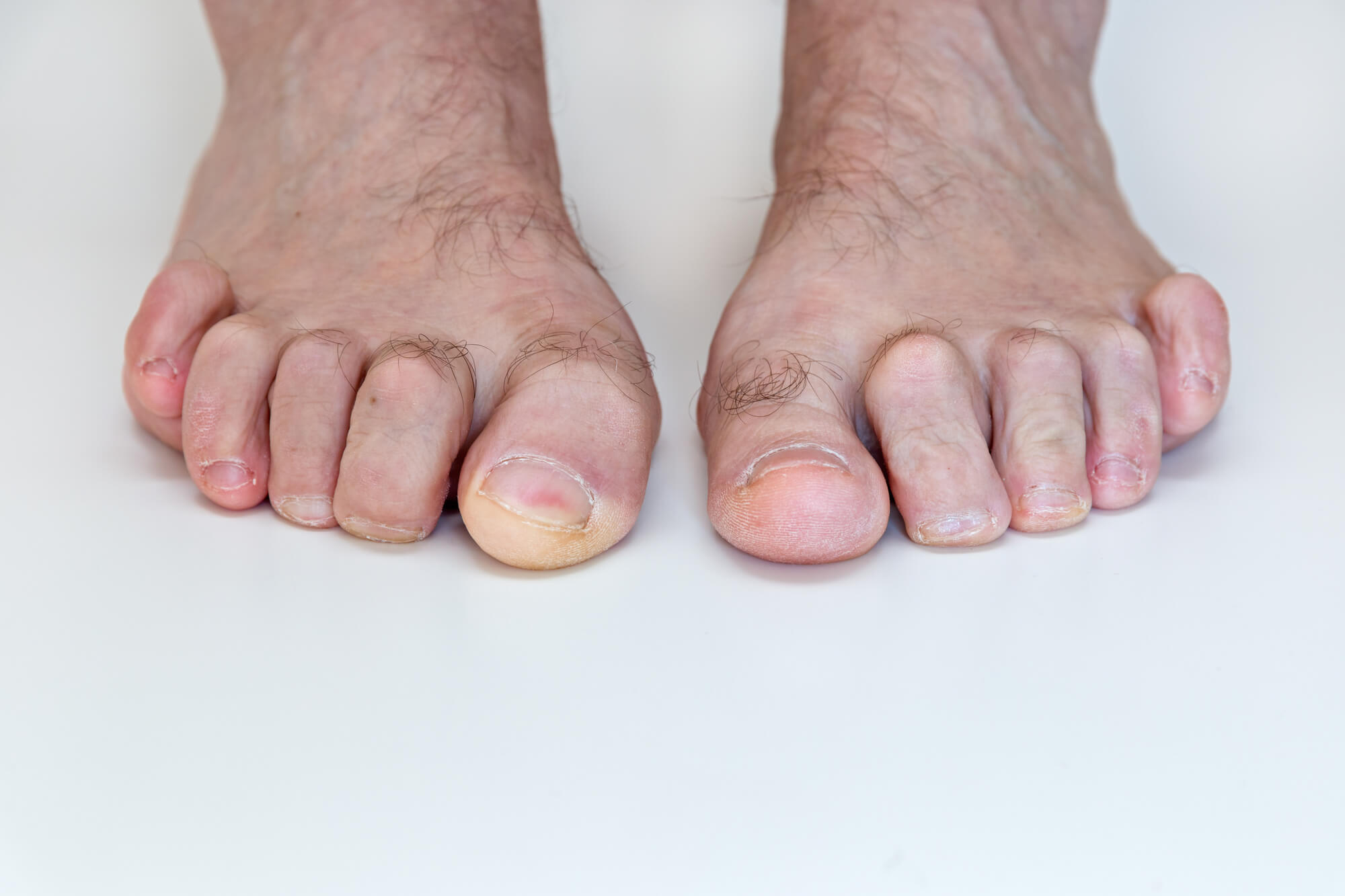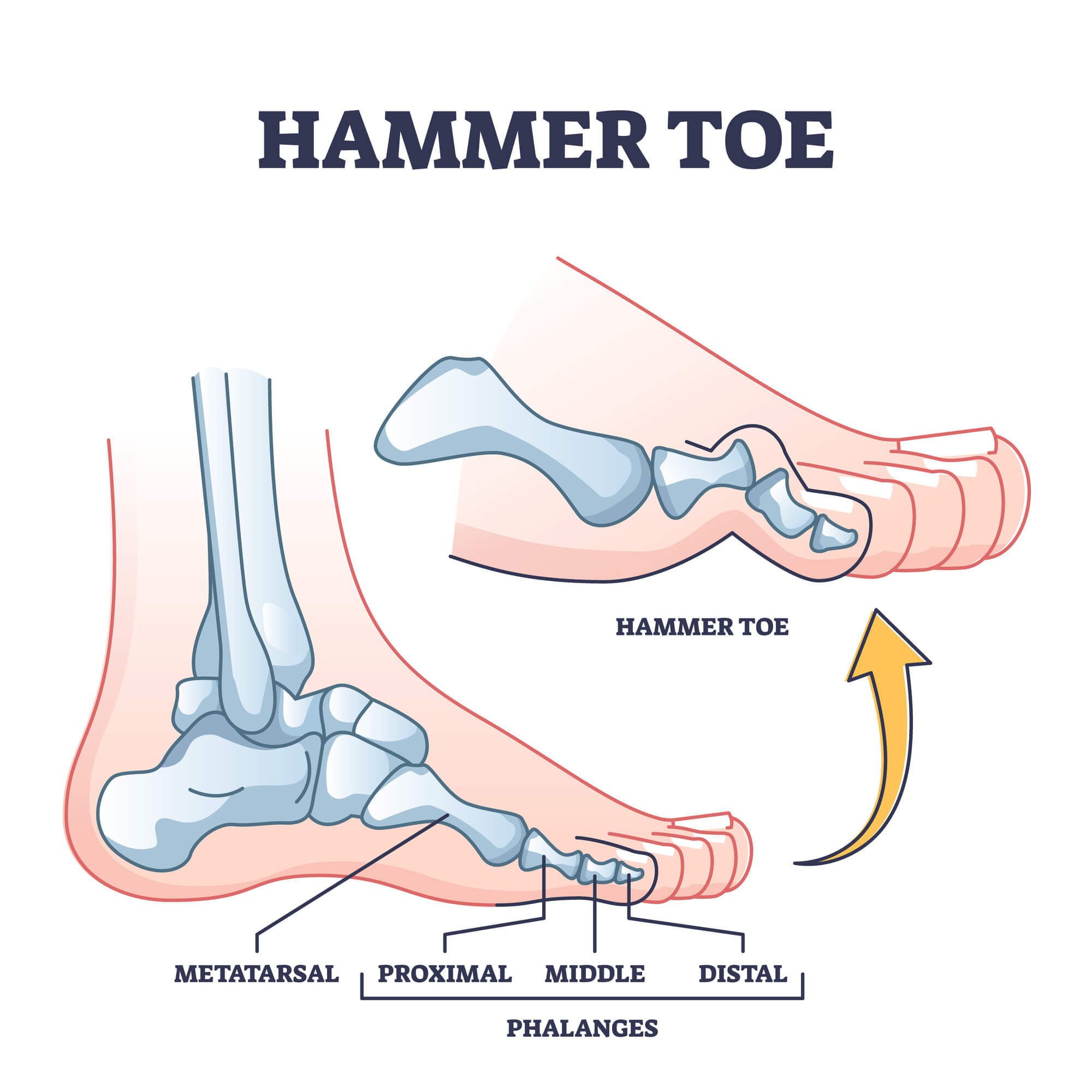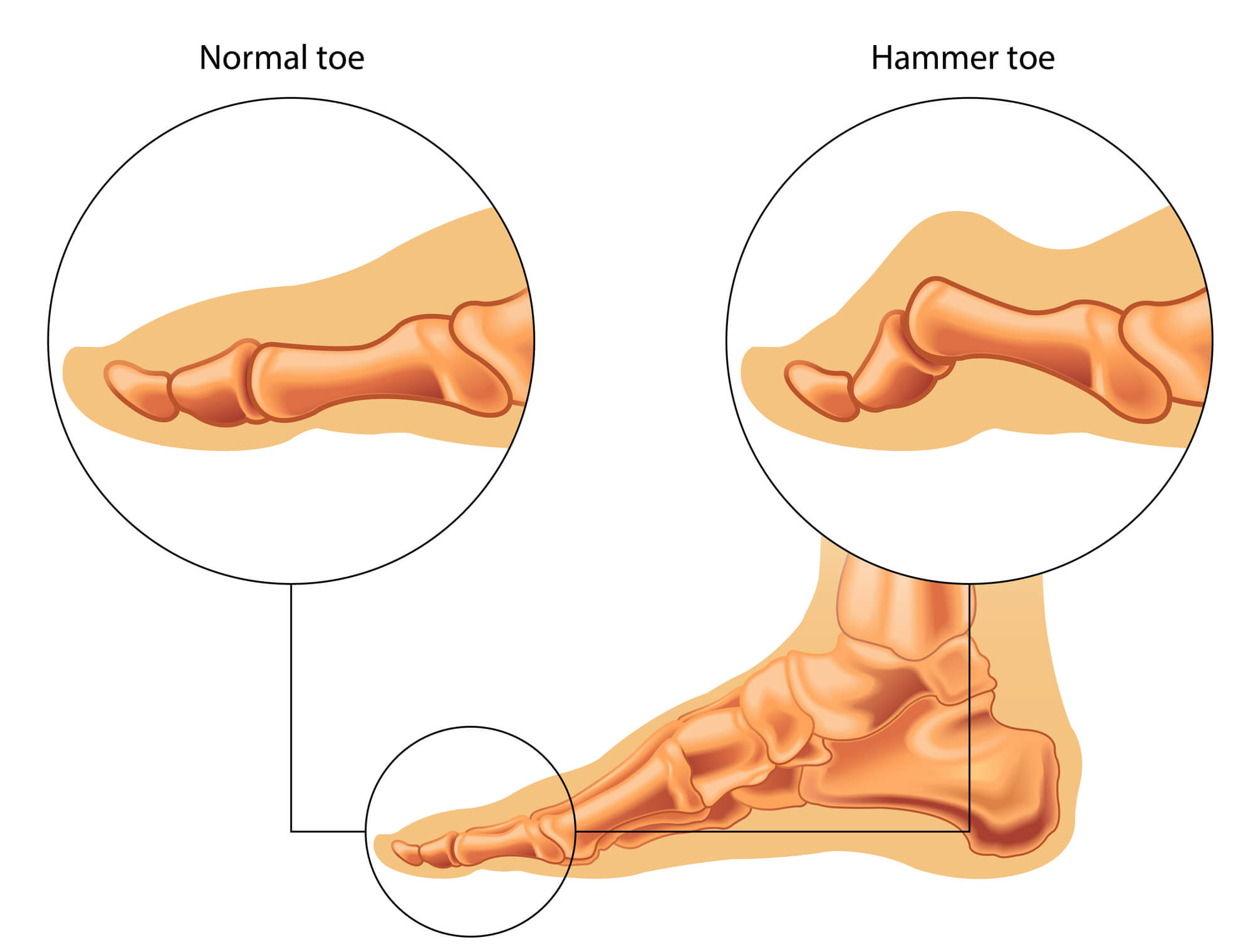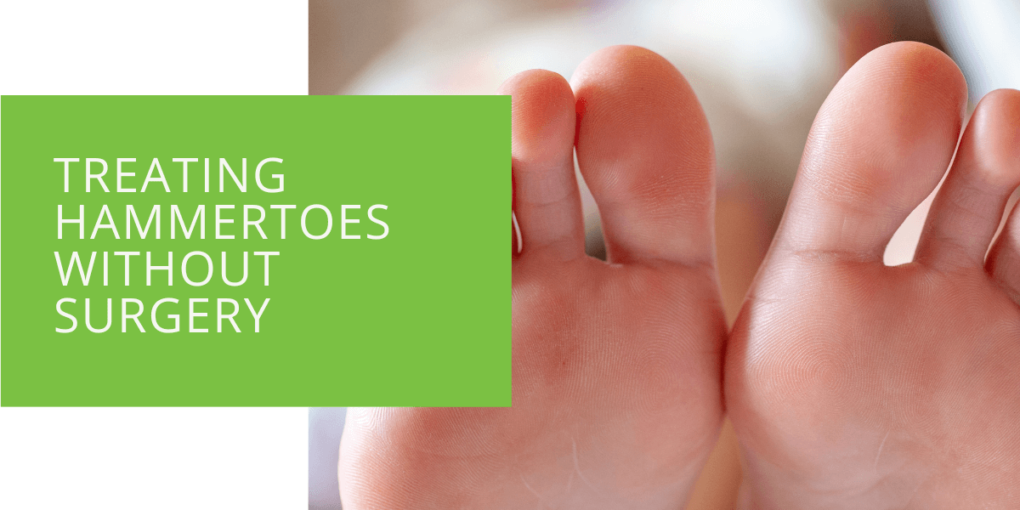Treating Hammertoes Without Surgery
Hammertoes are a common foot deformity that can cause discomfort and pain when walking or wearing shoes. They occur when the joint in one or more of the toes becomes bent, and the toe becomes permanently stuck in a claw-like position. This deformity can affect any toe, but it is most common in the second or third toe. While surgery is one option for correcting hammertoes, it is not the only option. This article will discuss non-surgical treatment options for hammertoes and when it may be necessary to see a podiatrist for further treatment.
What are Hammertoes?
Hammertoes are a type of toe deformity that can cause the affected toe to bend at the middle joint, resembling a hammerhead. This deformity can cause the toe to rub against the inside of the shoe, leading to a corn or callus on the top of the toe. The affected toe may also become inflexible and difficult to move.

Causes of Hammertoes
Several factors can contribute to the development of hammertoes. These include:
- Wearing shoes that are too tight or have a narrow toe box
- High heels that force the toes into a cramped position
- Foot injuries or abnormalities present at birth
- Certain medical conditions, such as diabetes or arthritis cause nerve damage and muscle weakness
Symptoms of Hammertoes
The most obvious symptom of hammertoes is the deformity itself. Other common symptoms include:
- Pain or discomfort when walking or wearing shoes
- The development of corns or calluses on the top of the affected toe
- Difficulty moving the affected toe
- A blister on the bottom of the foot

Non-Surgical Treatment Options
If you are experiencing discomfort or pain due to hammertoes, several non-surgical treatment options may be recommended by a podiatrist. These options can help alleviate discomfort and may even correct the deformity.
Wearing Proper Footwear
One of the most important things you can do to manage hammertoes is to wear properly fitting footwear. Shoes that are too tight or have a narrow toe box can exacerbate the condition by forcing the toes into a cramped position. Instead, opt for shoes with a wide, deep toe box and plenty of room for the toes to move. This will help to reduce pressure on the toes and prevent the progression of the deformity.
Using Toe Splints or Padding
Toe splints or padding can help to realign the toes and prevent the deformity from worsening. These devices are often made of foam or silicone and can be worn inside the shoe to help straighten and stabilize the affected toe. They can also cushion the toe and reduce discomfort when walking.
Exercising the Toes
Certain exercises can help strengthen the muscles in the foot and toes, which can, in turn, help improve the affected toe's flexibility. Some simple toe exercises that a podiatrist may recommend include:
- Stretching the toes by grasping the affected toe with your fingers and gently pulling it away from the foot
- Using a towel to stretch the toes by placing the towel on the floor and scrunching it up with your toes
- Using a marble or small ball to pick up and drop with the toes

Managing Underlying Conditions
Suppose you have a medical condition, such as diabetes or arthritis. In that case, that may contribute to your hammertoes. It is important to manage this condition to help alleviate the deformity and prevent it from worsening. This may involve taking medications as prescribed, participating in physical therapy, or making lifestyle changes such as losing weight or quitting smoking. Your podiatrist may also recommend specific treatments or therapies specifically targeted at managing your underlying condition and helping to relieve your hammertoes.
Additionally, it is important to regularly visit your healthcare provider to monitor and manage your underlying condition, as this can help to prevent the progression of your hammertoes and reduce the likelihood of needing surgical treatment.
When to See a Doctor
While non-surgical treatment options can be effective for managing and correcting mild to moderate hammertoes, there may be instances where it is necessary to see a podiatrist for further treatment. This may be the case if:
- Non-surgical treatment options are not providing relief from discomfort or pain
- The deformity is severe or has progressed significantly
- The affected toe is causing difficulty with walking or performing daily activities
A podiatrist may recommend surgical options to correct the deformity in these cases. However, it is important to remember that hammertoes' surgical treatment is typically reserved for more severe cases and should be considered a last resort.
Conclusion
Hammertoes can be a painful and uncomfortable foot deformity, but they do not always require surgical treatment. Wearing proper footwear, using toe splints or padding, and exercising the toes can all help alleviate discomfort and may even correct the deformity to some degree. If non-surgical treatment options are not providing relief or if the deformity is severe, it may be necessary to see a podiatrist for further treatment options. Regardless of the severity of your hammertoes, it is important to speak with a podiatrist to determine the best course of treatment for your specific needs.

